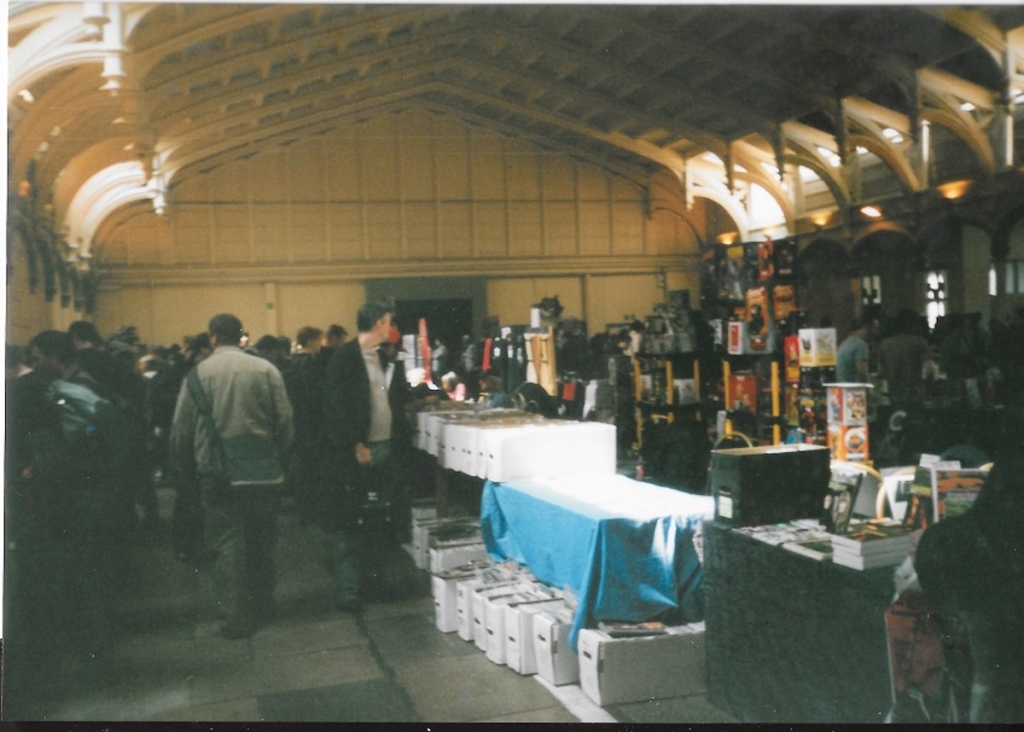To begin with, let’s get one thing straight: the British comic industry was dead. This must be distinctly understood.
In the 2000s, there wasn’t a British comic industry anymore. 2000AD and Commando were the last titles standing of the old boys’ comics and digest-sized pulp empires, the girls comics didn’t even have that, and the brief ‘mature readers’ magazines of the late 80s/early 90s were ten years dead; the weekly children’s comic Phoenix or the masses of graphic novels in shops are years away. If you wanted more British comics, you had to go to the small press: the comics made by fans in their spare time and with whatever cash they could scrap up, where the smallest of indie publishers and the passionate hobbyists in their bedrooms walked hand in hand. And if you wanted a small press comic, one of the few places to get them was Bristol, the site of the Comics Festival (1999-2004) and the successor Bristol Comic Expo, the biggest UK comic convention of the time.
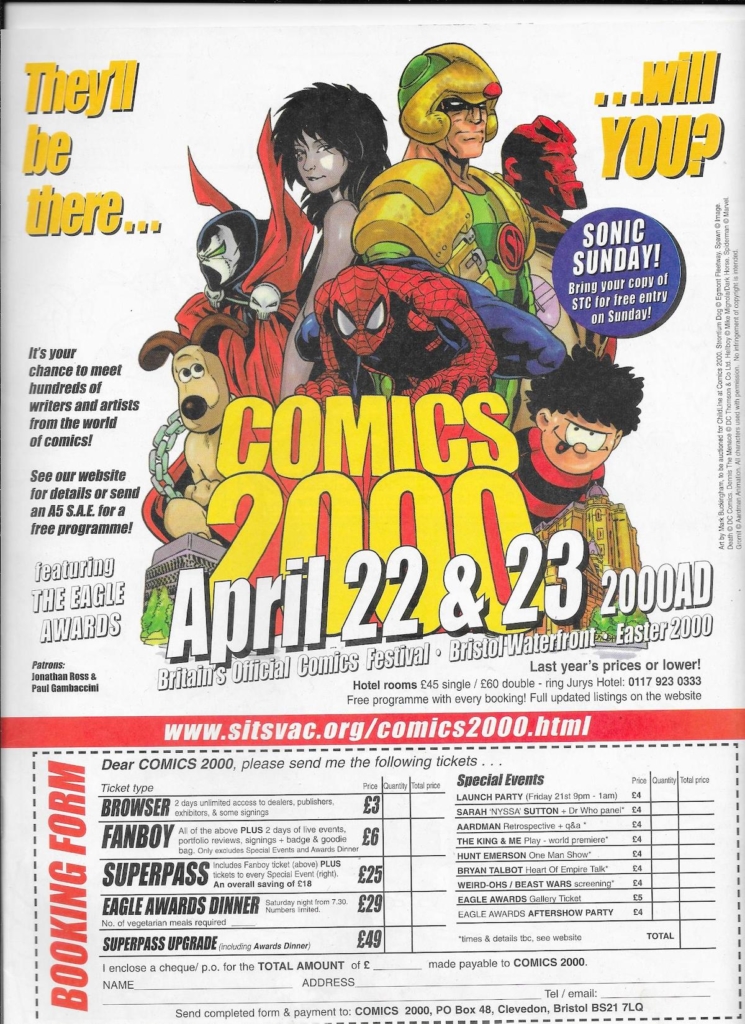
Bristol is the criminal that got to me before I lost the comic habit, fed me the harder stuff, and then jacked up the price. There wasn’t a dedicated comic store nearby and not much left in the newsagents, but before I could even think about comics being ‘kid’s stuff’, the last pre-reprint issues of Sonic the Comic had a big ad of characters telling me about this big festival just for comics and that “THEY’LL Be There… Will YOU?” Bristol was near enough that I could pester my parents into taking me and my young self was exposed to a mass of comics I’d never heard of before and all the small presses and the contemporary big websites and, dear reader, there was SO MUCH STUFF. I’m not sure how big the expo halls really were anymore but, in my memory, it’s a vast wonderland.
I hoovered up everything I saw – the supernatural soap opera Strangehaven by Gary Spencer Millidge, Paul Grist’s Jack Staff, Bevis Musson’s gay superhero series The Queen of Diamonds; Andy Winter and Natalie Sandell’s Antichrist-in-Camden paranormal comedy Devilchild, and Jason Cobley’s Bulldog Adventures about aviator hero furry Winston Bulldog. (I thought I still had copies of Devilchild and Bulldog when I went through my collection for this article; if I do, they’re not where they should be. I felt a moment of loss and then had to keep writing.)
These comics were often small ‘zines with squished panels because of limited budgets and you can see all manner of cunning tricks with the covers to stand out. Enjokosai uses tracing paper as a cover over the regular cover, so the girl on the front looks not quite part of the world; one Oddcases has a photo of an empty street at night like a crime book cover, framed by the title “The Strange Case of the Haunted Drag Bar”; Hit (2003) has a photo of the writer looking like he was punched in the face.
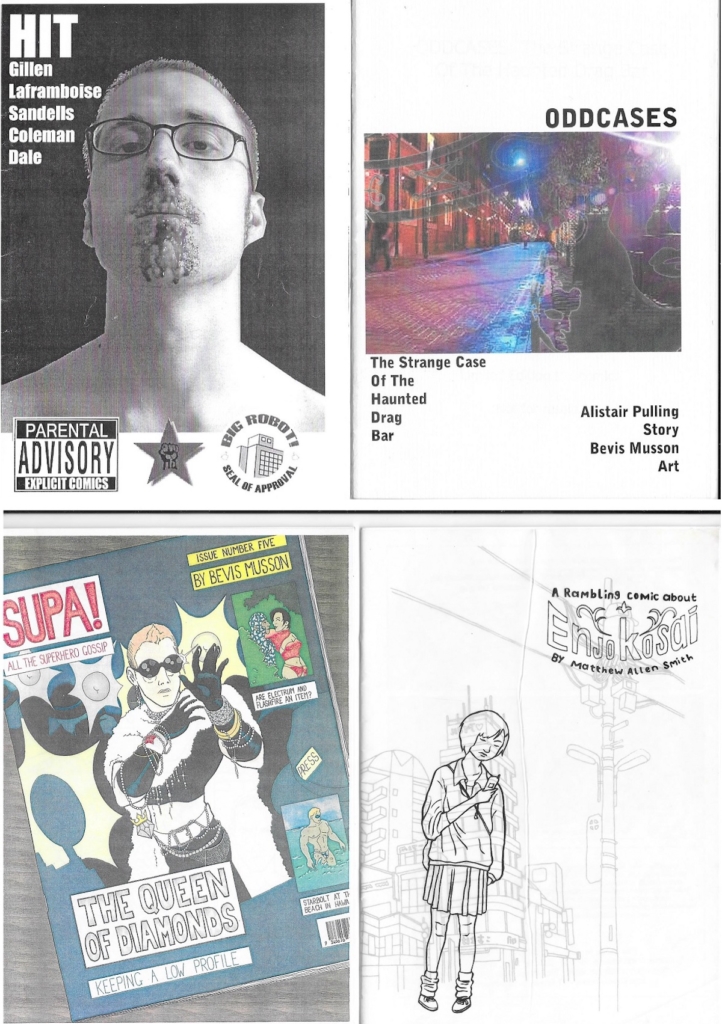
But something had started to change in early 2000s Britain. A lot of small press creators had decided the British industry didn’t have to be dead. If small press was all that would exist in the future, then they’d be the industry of the future. And they had a lot of ideas of what that future industry would look like.
Simon Furman and Andrew Wildman’s Wildfur company was an attempt to capitalise on the attention from Dreamwave’s Transformers. They saw the future as making IP they’d get to own and their proof of concept was sci-fi pulp The Engine, where superhero mechanics fight to stop industrialisation gone mad. The Engine is on the Internet! It’s a motion comic! Uses the latest in Flash! Their table had big video displays of the Engine trailer and they wrangled ads in Titan’s Transformers trades, and it was so clearly going to work.
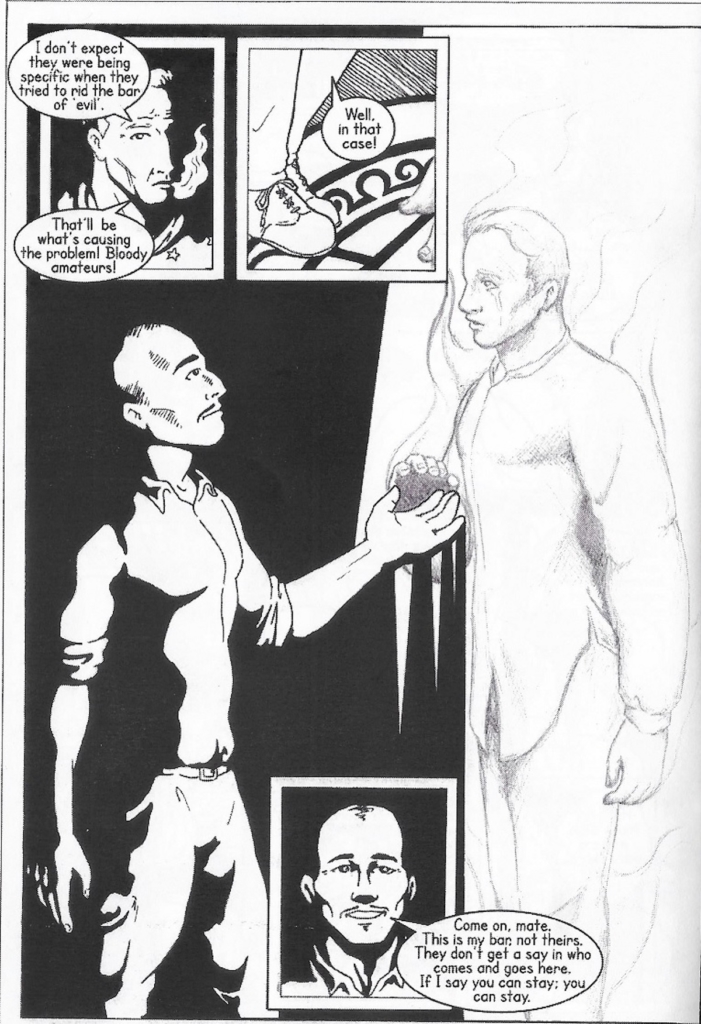
Oddcases: The Strange Case of the Haunted Drag Bar is a rather sweet comic about a poltergeist accidentally exorcised from his old bar and the LGBT community helping him stick around. It’s a bit like the early Vertigo’s if they were nice. The story, where the ghost enjoyed seeing the bar go from a hidden place to somewhere public, has been stuck in my head for twenty years. The next Oddcases I have, The Nasty Little Man, is another self-contained supernatural comic but has continuity & a cliffhanger in its framing story. An editorial by writer Alistair Pulling at the end says this is where he and Bevis Musson want to take Oddcases. The future is serialised.
Hit (2003) is a collection of strips by the same writer but different artists, with the writer saying he’s doing this to learn how to do comics. “I’ll do better.” That writer? Kieron Gillen. The first tale is a man’s thoughts as he’s hit by a car, with a highly structured panel layout and internal narrative to slow down his death for us. The third strip is about creation and about music and about men fucking up, as a singer thinks his band will catch on if he acts more ‘rock’ and thinks that means being a complete shit to people. The punchline for that one is burned in: he ends up going nowhere but the girlfriend he deliberately screwed over does. You can see Gillen’s future waiting to be born, he’s carving out his own career.
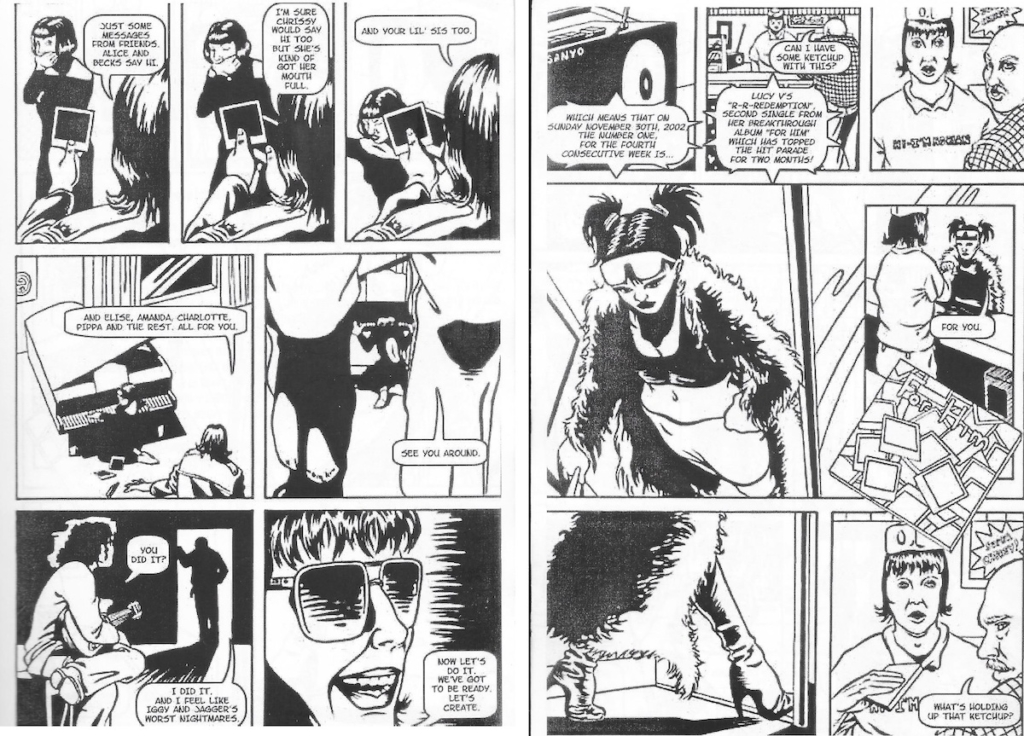
Carl Critchlow’s Thrud the Barbarian (2002-04) and Nabiel Kanan’s The Drowners (2004) are both titles that take what the creator was already known for, dopey violent fantasy strips for 1980s White Dwarf and moody adult political dramas respectively, and storms ahead into the new world. Thrud’s beer-seeking idiocy destroys at least three civilisations in the issues I have just from turning up – as I’ve grown more mature, I find this more funny. Kanan still oozes with adult sophistication (I am reading a mature comic) in his tale of lives caught in the wake of a failing media mogul, from a terrified junkie to the man’s callous wife. In one effective three-panel sequence, she just put her cigarette out on her maid; we only see this through everyone’s expressions and hers doesn’t change as she does it. Violence plays differently in this world than Thrud.
Traditionally, British comics were either magazine-sized or in digest formats rather than the mainstream American size, and traditionally a small press comic had cheap paper stock to keep costs down. Thrud and The Drowners instead have the same dimensions, cover style, and paper stock of an American indie comic. Thrud is even in colour! For them, the future is getting the mainstream audiences to come to you by looking like something they know. Kanan in particular had big plans with his New Flame publishing venture, promising in #4 that there will “be more to come from New Flame in 2005” and having a stirring mission statement on his website: “Encouraged by the recent growth in diversity of the graphic novel medium, Kanan sees New Flame as a great opportunity to publish a wide range of styles and genres. From sci-fi to drama, from mystery to comedy, look for a plethora of new titles from New Flame in the coming year.”
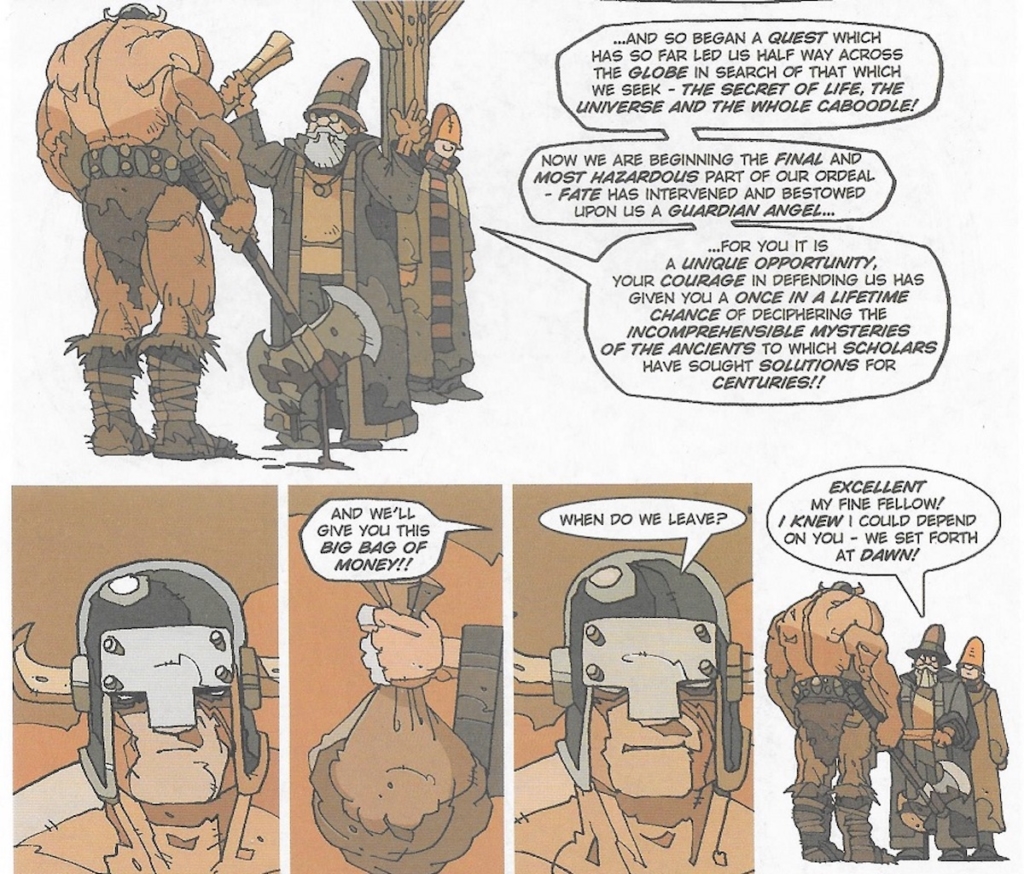
Andy Winter and pre-fame Declan Shalvey’s Hero Killers (2006) shows a march of progress. Winter’s comedy-horror Devilchild had been getting slicker as it went and with his new title, Winter has clear plans for his career and his indie company Moonface Press. We have a shiny cover and proper paper stock. We have an editorial about plans for a series of self-contained genre tales that would deliver a satisfying story in contrast to the contemporary mainstream’s decompression. Shalvey is doing a very clear ‘superhero style’ bit of work here too. The story itself, a team of supervillains who bump off low-level superheroes so gangsters can move to their cities, is a mild deconstruction of superhero tropes and reads a lot like American superheroes of the time in its dialogue and costumes. The only discordant note is a last-second swerve into Lovecraftian horror as the first hero they killed has got back up due to something in the water.
I remember the ending catching me out, this edgy cool bit of cynical super-heroics doing a big swerve on me. It’s a comic you might buy elsewhere, but Winter and Shalvey have done it in one hit and they’re doing it better. You want this sort of stuff, why not come to Moonface? But the biggest of the future dreamers in my old long box are Accent UK, a collective of North-West small press people. In their first of many themed anthologies, Remembrance Days, they talk about their plans to expand and share resources. If the future was going to be small press, it would be to be collective to get things done.
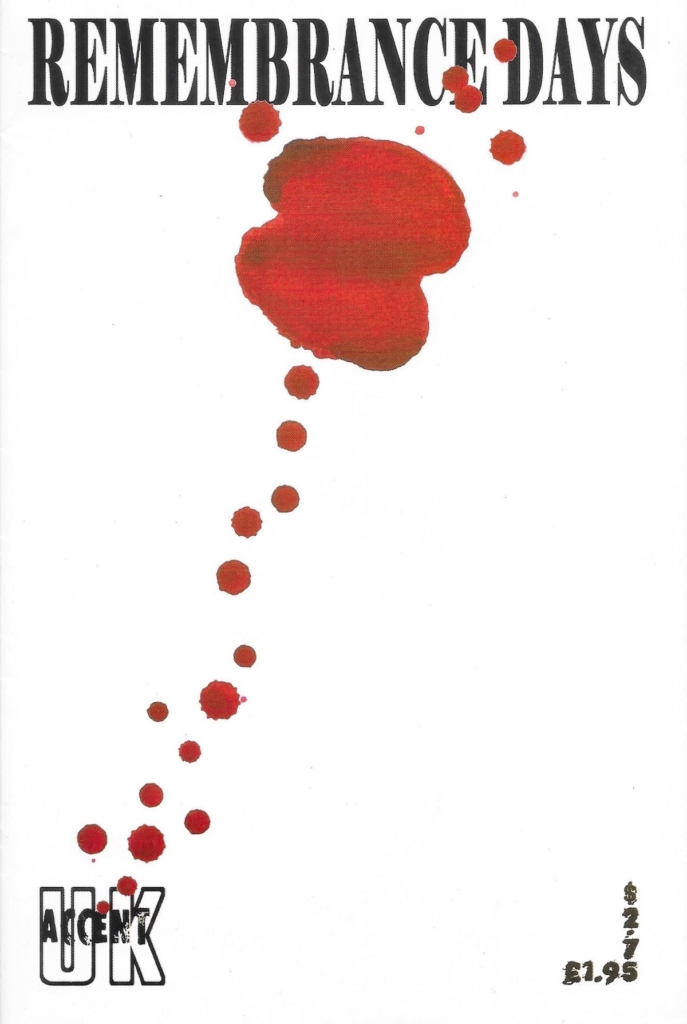
Remembrance Days has an eye-catching cover, stark red on white, but is fully black and white inside on cheaper paper. The art can be rougher and scratchier than the cover implies but comes in a variety of styles. Over a year later is Pirates, with the same style of cover but now it has a chunky cardboard cover, it has more strips inside, and it has some quite polished art styles. In one of those stories, an ancestor of Jason Cobley’s Bulldog shows up like Batman guesting in a new DC title. The back page doesn’t just advertise other anthologies, it advertises their own fanzine, Red Eye, a mag dedicated to British comics and this includes the small press scene. “The Wake Up Call for British Comics!” The Drowners #2 gives it a big shout out as proof the British scene is alive and kicking.
These comics told you the future was collective.
(What happened to my copies of Red Eye? Did I chuck them out? Why?)
Twelve (2005), their fourth anthology and themed around the Labours of Herakles, is even swankier. It has the chunky cover again, it has the art, and it has a big ad at the back for Accent UK and their affiliate’s wares. Redeye, Bulldog, OmniVistaScope, Rainbow Orchid, Springheel Jack! A who’s who of some of the more connected small presses of the time.By Zombies in 2007, the future is now. This is a big fat trade paperback on glossy paper! They have dozens of stories! They have some actual pros involved too! Leah Moore and John Reppion, the Beano’s Laura Howell, a Kieron Gillen who’s gone pro, and Steve bloody Bissette! Looking at Remembrance Days to Zombies, I can see the march of progress and a crackling energy. This has to be the shape of things to come if it has all these people and all these comics, if the production values are this good, if it’s a small press comic that can slot alongside the US mainstream on a shelf and look like it belongs there.
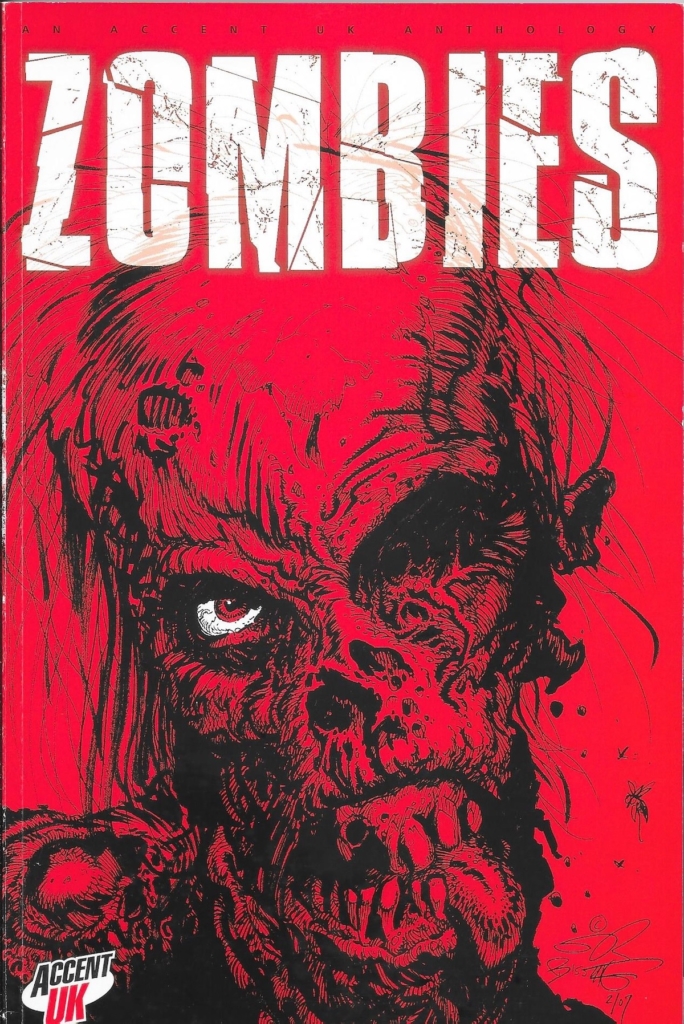
How well did these futures work?
Well, The Engine used Flash and that means it’s a complete pig to use the Wayback archived website in 2022. If you can manage it, none of the comic strips seem easily viewable. I can only vaguely remember the basic plot of the first strips (a baddie from another reality was invading, I think?) The creators still work but on different projects. It’s an utterly lost future.
Oddcases stopped making new comics in the late 2000s, after being part of the female-protagonist centred anthology The Girly Comic – the publisher used to put the strips online, but they don’t seem to be there anymore. I don’t know what happened. Thrud won an Eagle Award for Best Small Press and Critchlow got more jobs from 2000AD off the back of it, so that worked out, but Kanan never did bring out those new comics in 2005. The Drowners got a trade paperback from Image and that was the last new comic he did as far as I’m aware. The Drowners is great! Why did it end this way?
Andy Winters would bring out more one-shots but had stopped self-publishing as Moonface Press by 2011. He has had a few graphic novels published through Markosia and has more upcoming, so by any objective standard he’s doing well and is just doing different things.
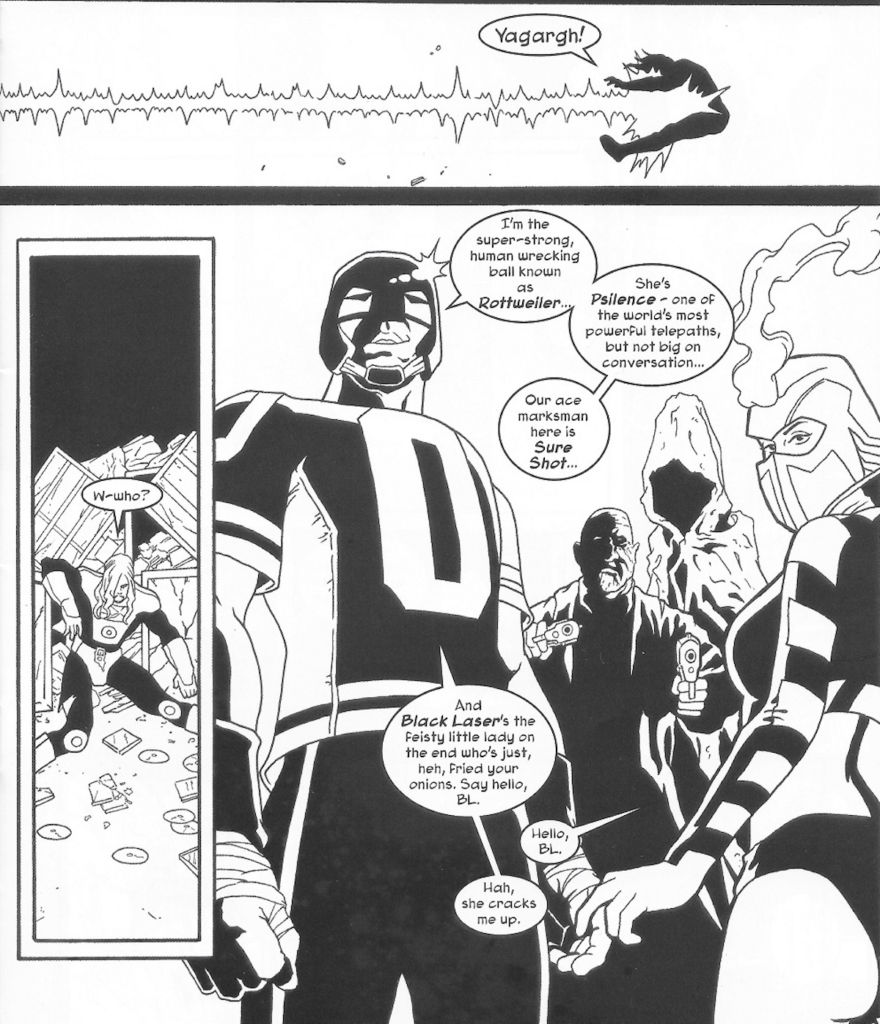
What happened to Accent UK?
To my surprise and delight, I found out they’ve been around right up until 2022! Long after I lost track, they continued to make new comics. Dozens of them! They foresaw a future of collectively-made small press comics and they made it happen. To my dismay, in 2022 they disbanded. The two men running it will continue to make comics but yet another publisher is gone, and more comics will disappear into distant memory.
The British small press industry of 2022 is not the same one from back then. Nobody predicted Kickstarter. You don’t necessarily need to go to a con to sell your wares now. Some of the figures are still around and working in this new world, such as Jason Cobley being part of Brawler and Kieron Gillen getting that Marvel money, but all the many anthologies and OGNs and webcomics are different. Better production values and colour artwork are standard in the small press now, which makes everything look more professional than the olden days of A5 ‘zines stapled by hand. They can sit next to a mainstream comic but the tradeoff is higher cost.
Is this better or worse? Obviously, it’s better. There are more comics and more people making them. there are new ideas and new people, and the wider industry offers more places for creators to go. But it’s sad looking back at the dreams of the past and seeing how many didn’t quite work. People imagined a future of shiny technology, of collective work, of personal branding, and some of it did work, for a time, making good work, up until it didn’t. Maybe this could all have worked for longer. It was a good dream.
The Comics Festival I went to was twenty-two years ago, little from then survives, the last Bristol Expo was in 2014 after years of losing ground to other conventions, and I am old now. I wish I’d kept my copies of Red Eye.
